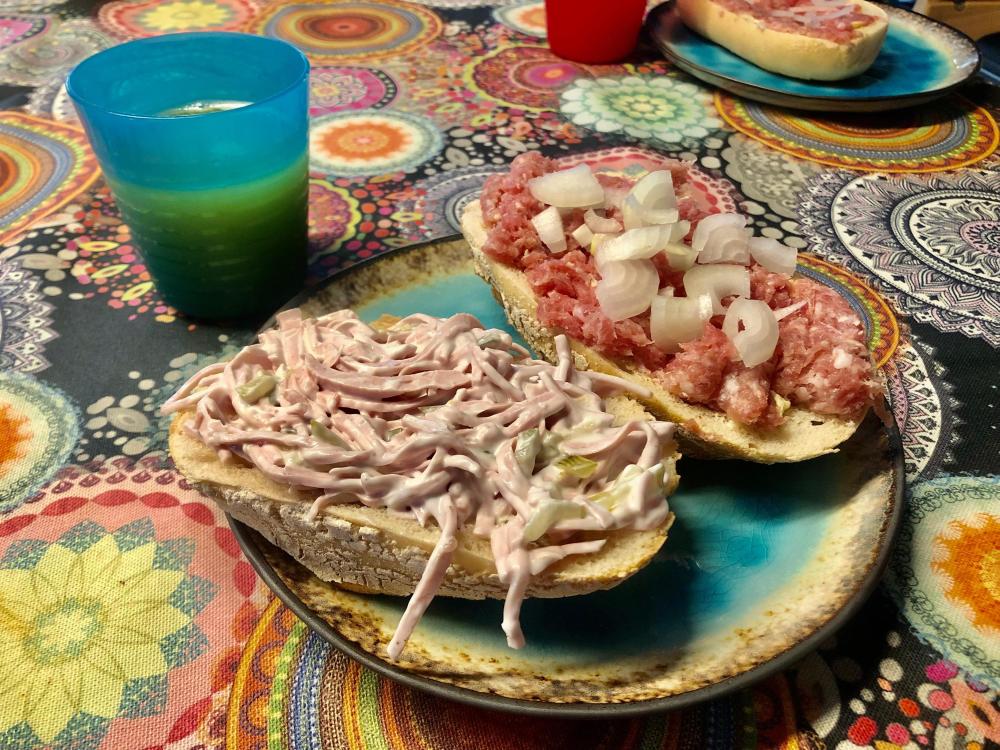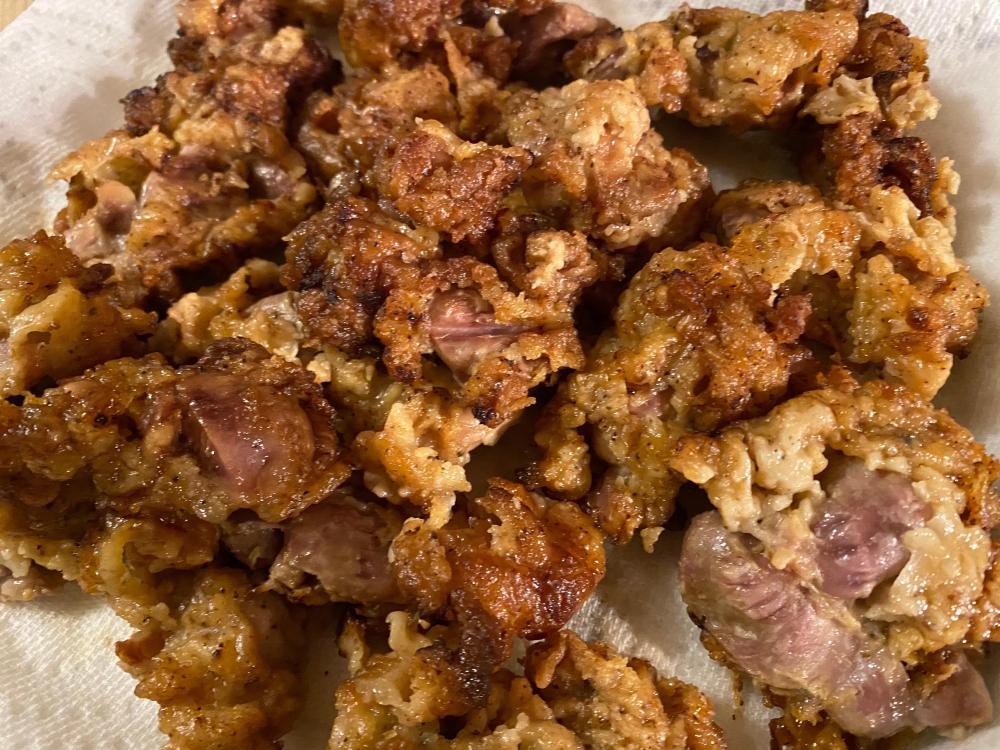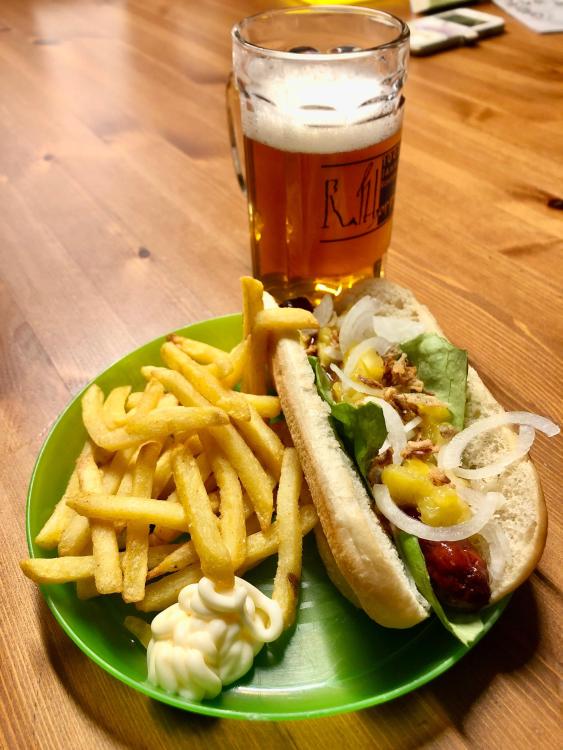-
Posts
4,140 -
Joined
-
Last visited
Content Type
Profiles
Forums
Store
Help Articles
Posts posted by Duvel
-
-
5 minutes ago, paulraphael said:
All chilling is proportional to dilution, no matter matter how far you chill. Dave specifically demonstrates this. The amount of chilling due to conductivity, or the coldness of the ice, is always minor.
Ice’s tremendous chilling power doesn’t come from the energy required to heat it up, but from the energy required to melt it. It takes 0.5 calories to heat a gram of ice from -1°C to 0°C (this value is called the specific heat of ice,) but almost 80 calories to melt that same gram (this value is called the heat of fusion of water). To put it another way, melting 1 gram of ice provides the same chilling power as bringing that same gram of ice from -160°C to 0°C.
Please forget for a second the „melting ice“ mantra. That’s for a limited amount of 0 oC bar ice. Run your head through the Duveltini experiment, which happens all below 0 oC. A simple mass transfer limited equilibrium, no phase transitions. And I guarantee you with proper ice size and agitation it will be faster that what Dave observes … -
1 hour ago, paulraphael said:
And that essentially ALL the cooling power is from the melting.
Yeap. At 0 oC, and you pay for that by diluting your drink. If you don’t want that, please see above 😉 -
6 minutes ago, paulraphael said:
Take a close look at Dave Arnold's research. He demonstrates that cocktails chill to below 0°C. And that essentially ALL the cooling power is from the melting. No need for salt; alcohol works through the exact same colligative properties.
In his book he explains this in greater depth ... enthalpy vs. entropy—and why cocktail chilling depends on the same essential principles that guarantee that the universe will one day die.
I think you might not get me 😉I do not contest his findings, and his conclusions are mostly apt. There is a fundamental difference how we see this issue: Dave (and you and most of this thread) has copious if experience in cocktails and the setup of a bar. And has understood and accepted these limitations as the parameters in which one works in. And that’s completely fine. „This is what we have, and this is what comes out of it“
I have no idea about the delicate ways of making cocktails. My angle is more of a goal-driven approach and what do I have to do get there. And what I have realized is that most of what I would do to for example chill a drink without dilution would not work or at least not used in a bar setup. „This is what the outcome has to be, and this is what is needed for that“.
The original question was how much dilution will a drink suffer (experience) if you cool it with ice. 25% dilution stands in the room. I couldn’t figure out where it comes from, but if I would have to I am quite confident to be able to control the amount of dilution from close to 0% to whatever. The solution for the former would be a significant excess of coolant (ice) over the drink and employing the coolant at the lowest available temperature. This is a simple technical solution, but it just doesn’t work in a bar setup. You have noticed that Dave starts from a shaker and whatever ice/water mixture goes in - there simply is no possibility of excess coolant. I would assume that is why the mass of the ice is not discussed, either. It is the outcome of what you have and he explaines the underlying thermodynamics (and does it well). So again: completely fine, just a set of limitations I did not understand before …
-
1 hour ago, paulraphael said:
How would this allow 0°C ice to chill a room temperature mixture to -7°C?
If you want to do that, you have to add a lot of salt to the ice, and use it as cooling mantle, not an ingredient. -
59 minutes ago, paulraphael said:
Why would you think that? How would this allow 0°C ice to chill a room temperature mixture to -7°C?
That‘s without the 0 oC ice limitation in bars. The latter is adressed in the sentence after your citation.10 hours ago, Duvel said:However, I understand that in a bar context with (as I have learned now) 0 oC ice and most likely the limited use of ice for cooling pure heat transfer may give way to a mixed heat transfer/phase transition process
And I think that because I used to work with this type of processes for a living (albeit not with drinkable substances). -
2 hours ago, weinoo said:
This Japanese-inspired "martini on the rocks" was created in collaboration with Kenta Goto of Bar Goto and features Japanese white rice vodka, Kijoshu, Hinoki bitters, and chef Kunihide Nakajima's special pickled sushi ginger.
That sounds pretty, pretty good* - I enjoy Kijoshu a lot and I love Hinoki bitters (and my bottle in the mancave could is always looking for more tasty application). Maybe they would consider a pop-up bar in Germany ?—-
but as a purist: can you really call this Martini 😝 ?
-
-
58 minutes ago, paulraphael said:
A refractometer would be tricky, because there's both sugar and alcohol in there. You won't get an absolute measurement that means anything. You'd have to get a before and after reading, and do some fancy math. I think using weight or volume would be easier and more accurate.
Sure you would need two readings (just as for weight or volume), as dilution is a diffential between two compositions.
Didn’t think of the math (that’s what the software of your Mettler Toledo usually takes care of), but I think it is doable. But I am fully with you that weight or volume is far easier outside of a lab 😉 -
58 minutes ago, paulraphael said:
They also tend to dilute more, but for a specific reason: bar ice is wet (it's always hanging out at 0°C) and more surface area means there's more water clinging to it. That water adds to dilution without contributing to chilling. Dave recommends shaking the water off of wet ice using a strainer.
That was indeed as enlightening as surprising to me. I would have assumed ice is employed significantly colder. With ice at 0 oC and in equilibrium with surrounding water also the surface area (on a microscale) will be rather smooth …1 hour ago, paulraphael said:- Temperature of the ice is irrelevant. Virtually all of ice's chilling power comes from its latent heat of fusion (the energy required to melt it). Making it 10 or 20 degrees colder will have little effect. Except, curiously ...
- Ice colder than 0°C will chill your drink more slowly than 0°C ice. Because science! It will take a bit of time to warm to 0°, during which it does some very inefficient chilling. Only when it hits 0 and starts to melt does the powerful chilling begin. However ...
This part I disagree with. For ice residing in the finished drink I agree - cooling (plus dilution) comes from the phase transition of the ice/water and is significantly higher that the pure equilibration of temperatures, but …Chilling the drink rapidly is (if done properly) a simple heat transfer process. So mass x temperature of coolant vs. mass x temperature of alcoholic drink.
However, I understand that in a bar context with (as I have learned now) 0 oC ice and most likely the limited use of ice for cooling pure heat transfer may give way to a mixed heat transfer/phase transition process, and that will less depend on the ice temperature (in the narrow gap that the bar allows). C.f. above Gedankenexperiment on @weinoos Duveltini …
1 hour ago, paulraphael said:Anything that adds significant heat to the drink from the outside will cause extra melting and dilution. This includes a hot ambient temperature, spending way too much time stirring / shaking / hanging out, or using an unchilled vessel that has a lot of thermal mass, like a classic stirring glass.
Amen ! -
2 minutes ago, weinoo said:
Also, let's not pretend that Don Lee, Dave Arnold, et al., didn't scientifically work on these experiments. What's whittled down in print may be just for ease of comprehension.
https://www.cookingissues.com/index.html%3Fp=4585.html
Now we are talking. Still doesn‘t explain the 25%, but now I am getting to the point to believe that this is actually their desired target value they tailor their method to … -
10 minutes ago, weinoo said:
Especially when the observations are from some of the top cocktail minds in the biz.
I think these observations would be perceived as less random if he would specify his setup or method belonging to this specific dilution. But maybe that’s my OCD talking again …Or maybe he is that good that he actually aims for coming out exactly at that dilution ?
-
 1
1
-
-
-
Big day today: little one got his first ever half year report in school (he‘s doing fine) and his first CoVid vaccination shot (he‘s doing fine, too). So he got to choose a movie (on a friday !) and dinner - he wanted hot dogs and fries …
Hot dog with spicy beef sausage, teriyaki mayo, pineapple, roasted & fresh onions and some greens on a brioche bun. A beer. Rest of the family got the beer-less menu.
Served together with „Back to the outback“. Happy kid 🤗
-
 17
17
-
 2
2
-
-
1 hour ago, weinoo said:
As long as you're taking the deep dive, and are really worried about this stuff while drinking straight gin, @Duvel...
There is a lot of observational (if not anecdotal) findings in this thread, probably most of it correct in one way or another. Maybe the starting point of Modernist Cocktail …I know I am a bit OCD about this. I do like the original article @weinoo cited, especially the description of the narrow sweet spot. And as much as I like the accuracy to close in on the spot, I’m feeling disappointed about the formula to get there, simply assuming 25% dilution. I know it is more complicated than that, with more variables, but given my tendency to overthink these type of issues, I will do my best to just let it go (and keep drinking straight gin martinis) …
-
 1
1
-
-
26 minutes ago, weinoo said:
Nice article with quite some valid points.„The ice they made was in pieces that were smaller and had more surface area, says Schott, “either hollow cubes or little half-moons.” The greater ratio of surface area to volume meant the ice was quicker to make but also quicker to melt. And that makes a very significant difference to a drink.“
„When our Kold-Draft machine would crap out, we’d use half-moons, and every cocktail we made would taste completely different, because everything was watered down about 20 percent more.”
And that’s that part that I struggle with - with all these variables, how can one come up with a simple 25% formula.
To put it in an extreme example: Imagine someone* making a Duveltini comprised of 92 g gin and 8 g brine. He takes his ingredients from the fridge at 8 oC. He pours this mixture rapidly onto a large insulated stirring vessel filled with 1000 g of crushed ice, taken from the freezer at -20 oC. The ice will essentially not melt. There will be little to none dilution, except for some surface phenomena. The end result will be ~100-105 g of Duveltini at ~-16 oC …
—-* like e.g. @weinoo
-
23 minutes ago, weinoo said:
Who do you think you are, Dave Arnold?
I am but a simple man living by simple principles …
-
 1
1
-
 2
2
-
-
27 minutes ago, paulraphael said:
The way to figure out your actual dilution is to just measure the volume of your cocktail after you strain it. You'll see it's a lot bigger than what you measured into the tin.
The difference divided by the final volume = your percentage of added water.
If you think you're getting too much, there are ways to remedy this.
Thanks ! I would have probably just used a refraktometer, but your method certainly works as well …What I would like to know it how one can be certain about the 25% dilution. I thought to puzzle together a small Aspen simulation for that but …
temperature of the mixture pre chillingtemperature of the ice
environmental temperature
amount of the mixture pre chilling
amount of ice (mass)
surface volume of the ice
heat capacity of the shaker/stirring vessel
time of contact between mixture and ice
…
And then you have the „melting“ part of the equation, but also the „dissolving“ part, which heavily depends on the surface volume of the ice, but also the surface structure.
I know I am overthinking this. But then again … 25% 🤔
-
1 minute ago, Dave the Cook said:
I used the formula from the article:
Thanks. I do not see really where he gets the 25% dilution from … Seems a bit random, but I’ll calculate myself one of these days. -
6 minutes ago, Dave the Cook said:
One of the guys pointed out that the drift towards less and less vermouth, which actually started in the 30s, was also a drift towards a stronger cocktail, and that the preference for "dryness" was possibly just an acceptable cover for incipient -- or even full-blown -- alcoholism.
Umm 🙄 … guilty as charged ?-
 1
1
-
-
4 minutes ago, Dave the Cook said:
Using Dave's recipe proportions (3:1) and something like Tanqueray, you're still in jet-fuel territory: 34.9%. You have to back off to 1:1 to get a drinkable martini (this is 32.5%).
How do you calculate the dilution imparted by shaking/stirring it with ice ? -
I used 68 oC for 24h with great effect, but for the ease of timing I use 70 oC for 18h now …
-
 1
1
-
-
2 hours ago, liuzhou said:
Yes, but as ivrywun noes China doesn't do dairy, does it?
https://forums.egullet.org/topic/161694-china-food-myths/?do=findComment&comment=2272799
I remember a particular JV negotiation with a large state-owned company near Chongqing. Before the banquet at night our hosts insisted we drink each about 500 mL of room temperature drinking yoghurt „to protect your stomach“. I was impressed, because I was expecting a rather spicy Sichuan dinner* and thought it is very thoughtful. But my translator assured me that this was only to counteract the copious amounts of alcohol that they would „force“ us to drink later.
Unfortunately for them, after a few obligatory rounds of ice-cold red wine they left the choice of the hard liquor to us. It seems the drinking yoghurt did not protect their stomachs against Chivas Regal …
—-* and it was
-
 6
6
-
-
10 hours ago, Honkman said:
Agreed with the characteristics of Greece gyros but what you described at American gyros is unfortunately also quite regularly seen in other parts of Europe - I had such “gyros” in Spain, Portugal, italy and even back home in Hamburg perhaps 20-30 years ago some of the gyros was quite questionable.
I was under the impression that when you want to get some gyros in the US, you will get almost exclusively the uniform loaf derived variety, and not the stacked Greek version. That doesn't mean you can't get it anywhere else* on occasion, but certainly not as the standard. However, in Europe most of the gyros joints have been replaced by Döner selling ones. Döner is not made from pork and allowed to have a certain percentage of minced meat in the skewer, so is moves into the "American gyros" direction.
Adding on that, I don't see the necessity for the "unfortunately" expression ... I think it is a tasty product that serves its purpose, at least in the version I made. Not an elite gourmet food (neither is the Greek gyros), and sure you can always hide anything in a minced meat product, but that would be the fault of the producer/vendor, not of the product itself.
---
* Though not in Germany (anymore), as the term "Gyros" is protected by law. They would need to sell it under a different name.
-
 4
4
-
-
13 minutes ago, Honkman said:
What makes it American ?
Gyros in Greece is a spit with marinated slices of pork (typically neck/collar) stacked on top of each other, grilled and sliced off layer by layer from the vertically rotating skewer.American gyros is a kind of seasoned meatloaf, comprised of seasoned minced lamb, beef or a mixture thereof, precooked, sliced and fried (or grilled and sliced).
Thus, the choice of meat, the resulting texture and the employed cooking method will render it “American gyro(s)”.






The "Best" Dry Martini
in Spirits & Cocktails
Posted
True !
And don’t forget about those Japanese bartenders that spend 10 min chiseling the perfect round clear ice cube to put into your Hakushu 18. Best (and most expensive) drink drink I ever had 🙃